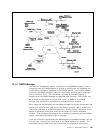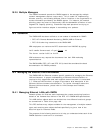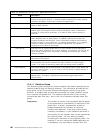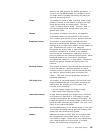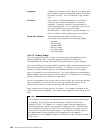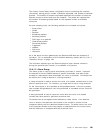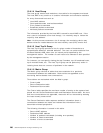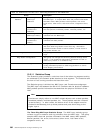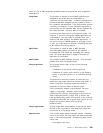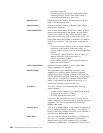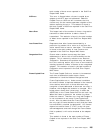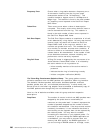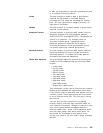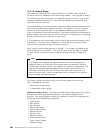
The Destination-Source table captures similar information but indexes it from a
receiver-oriented perspective.
10.4.1.7 Filter Group
The Filter group allows packets that are of particular interest to be captured
using arbitrary filter expressions. These packets are then directed into channels
that can be turned on or off to control the packet flow.
The channels can also generate events when the packets are passing through
them.
The Filter group provides the administrator with the flexibility of monitoring traffic
flow as well as setting alarm conditions.
10.4.1.8 Packet Capture Group
The Packet Capture group allows packets to be captured after they flow through
a channel. Packets may be flowing through different channels and a number of
active capture buckets can be active concurrently. Each buffer can be set either
to stop collecting data when full, or to wrap around when it is full. Packet
Capture allows the administrator to have a historical view of the packet activity
in the event of a failure.
10.4.1.9 Events Group
The Events group controls the generation and notification of events from the
monitoring device. Events can be triggered when traffic triggers alarms as well
as from traffic flowing through preset channels. The events, in turn can trigger
some other actions such as creating a log entry or initiating an SNMP trap or
turning a channel on or off.
The Events group maintains the following two tables:
•
An Event table that contains events that can be generated when certain
conditions are met.
•
A Log table to log generated events.
10.5 Managing the Token-Ring LAN Environment
Managing the token-ring environment as with Ethernet, requires knowledge and
understanding about its architecture. The token-ring extension for the RMON
MIB presents a view of the data-link layer of a token-ring LAN. 8.1, “Token-Ring
LAN Overview” on page 129 provides a breif description of the token-ring
architecture and terminologies used in the token-ring LAN environment. For
detailed information, please refer to
Token-Ring Network Architecture Reference,
SC30-3374 and
Local Area Network Concepts and Products,
GG24-3178.
10.5.1 Managing Token-Ring LANs with RMON
RFC 1513 was created as an extension to the RFC 1271 RMON MIB to include
definitions for specific objects as well as some additional monitoring functions
necessary for token-ring LANs. Some groups within the RFC 1513 MIB structure
require the implementation of certain groups found in RFC 1271. For more
details please refer to RFC 1271 and RFC 1513.
Chapter 10. 8260 RMON Support 201



